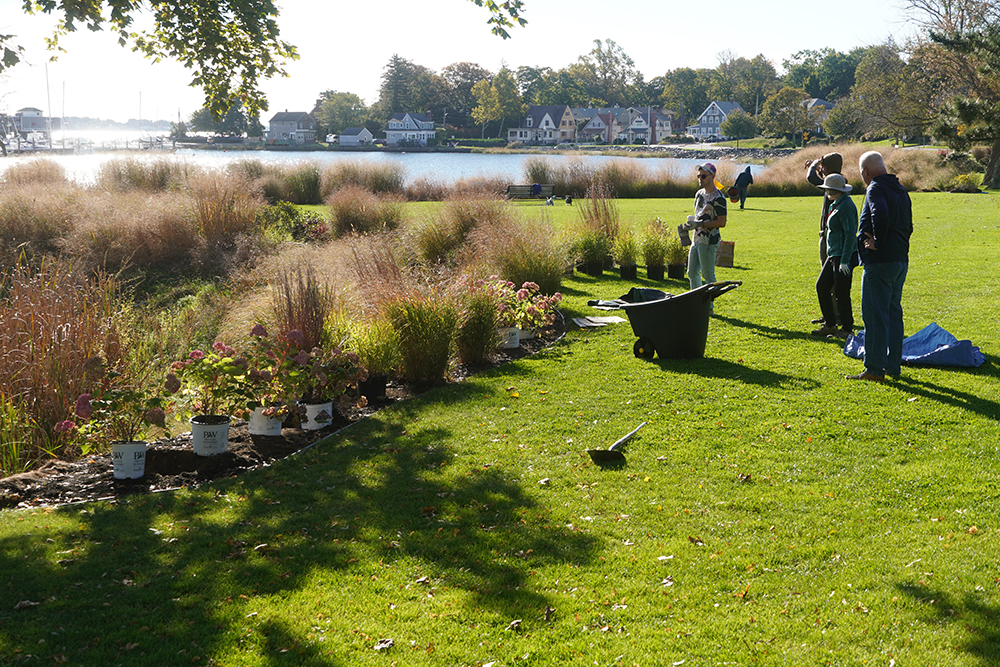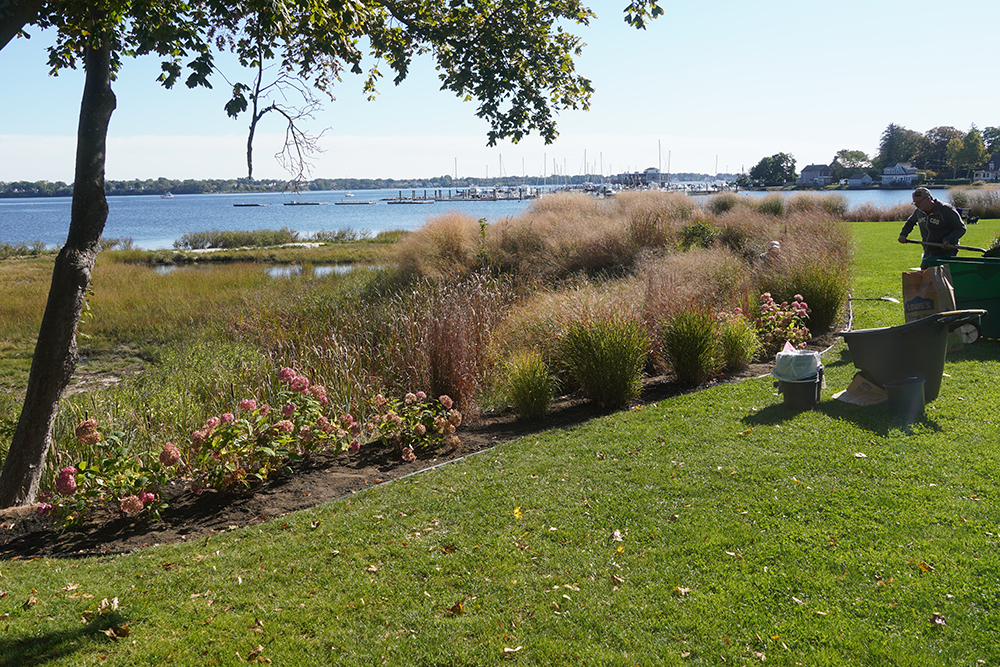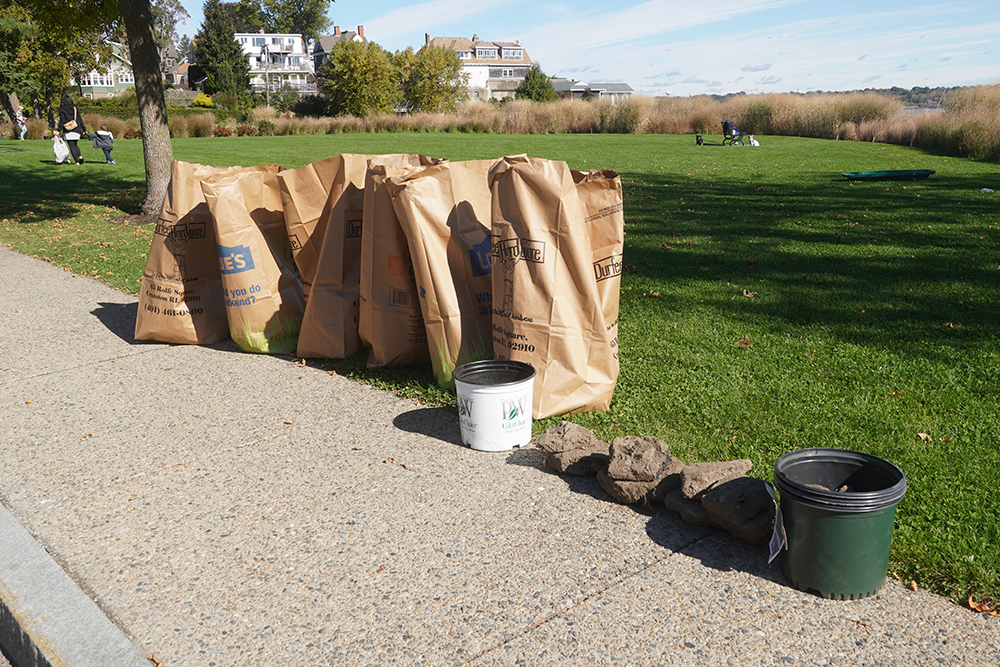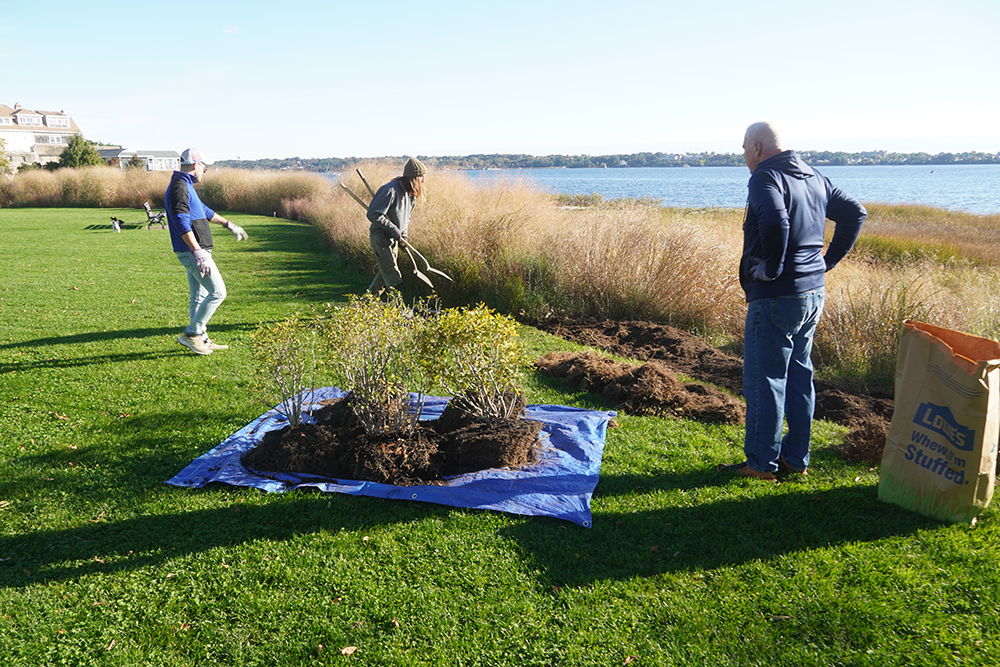Maintaining the park includes keeping a close eye on the plants that are doing well and the ones that need some help. It also means always improving.
Last year Winterberry were planted in the northern curve of the park. The berries feed the birds throughout early winter and add a nice look to the edge of the park. Several of the plants did quite well while a few seemed to struggle.
In an effort to give them a better location to thrive, we, led by Nick Cokonis, moved the winterberry to a location a with more sun and less competition for water. Where the Winterberry were removed, they were replaced by a variety of smooth hydrangea called ‘Invincibelle Ruby.’
A Better Hydrangea for Pollinators (including Bees!)
“The pollinators love these Hydrangeas” said Nick Cokonis. He continued explaining that the variety of hydrangea chosen to replace the spots where the Winterberry were have reproductive organs and nectar available. Most commercial hydrangea are cultivated to lose the nectar and reproductive organs so they won’t produce nectar or pollen. In these commercial plants, the sterile flowers can be four times the size, making them thirstier.
Asphalt: The Nasty Gift that Keeps on Giving
The slow release of petroleum from asphalt dumped on the site years ago is the nasty gift that keeps on giving. While preparing beds, the crew took the time to remove as much of the tar that they could find.

















































